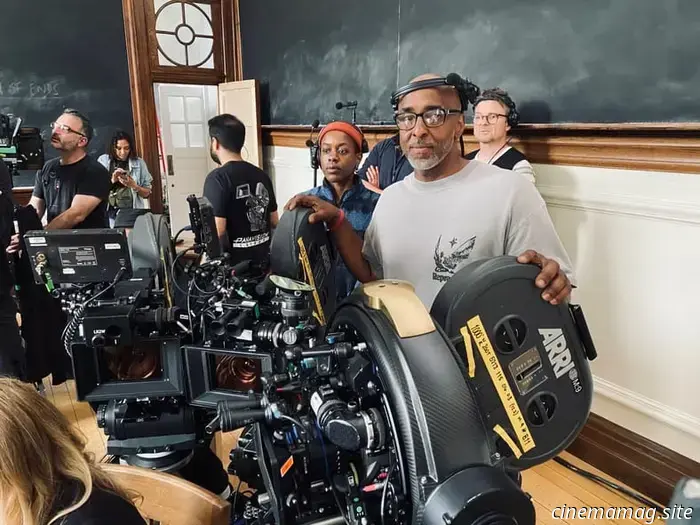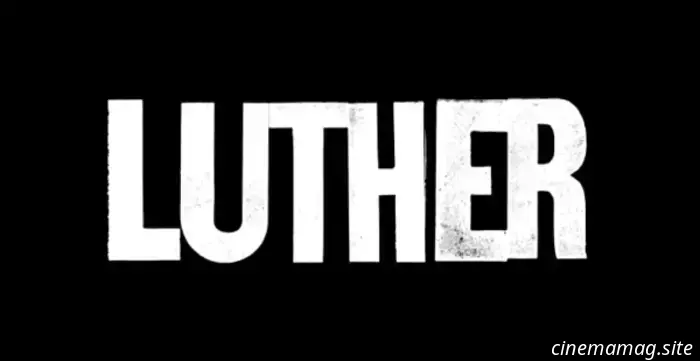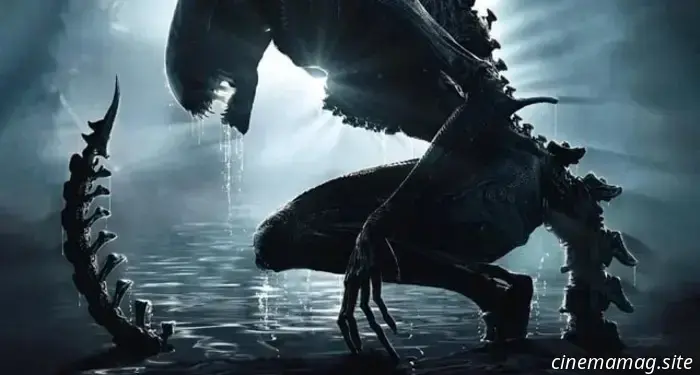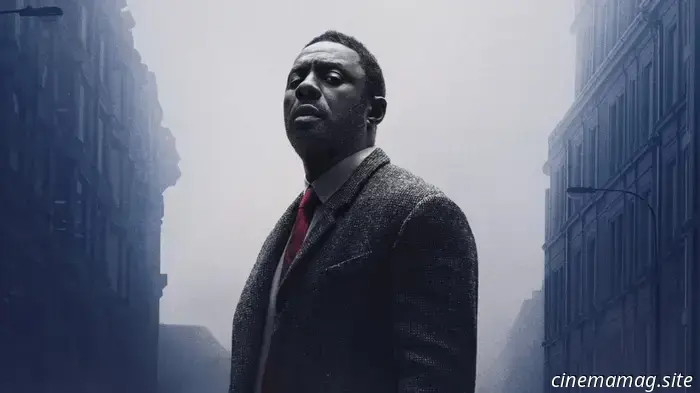
Cinematographer Malik Hassan Sayeed is searching for silver linings following the Hunt - MovieMaker Magazine.
Malik Hassan Sayeed traveled back in time to shoot Luca Guadagnino’s After the Hunt.
“In this film, we didn’t advance with technology,” Sayeed notes. “Instead, we returned to what I considered a sweet spot in technology. We shot on film and established very specific parameters for ourselves.”
He cites only two influences: cinematographers Sven Nykvist and Gordon Willis — “during very specific periods of their careers.”
Sayeed concentrated on the decade of Nykvist’s work, which included Ingmar Bergman’s The Silence and Persona, culminating with Nykvist winning the best cinematography Oscar for Bergman’s 1972 film Cries and Whispers. He also focused on Willis’ work from 1977 to 1988, a time that featured Woody Allen comedies like Annie Hall, Manhattan, and Zelig.
“What Luca aimed to do was to place some restrictions on the technology we used, ensuring it functioned only within that era. I found that to be an incredible exercise for us,” Sayeed shares. “We utilized lighting units from that period, lenses from that era, and film cameras produced during that time.”
The result is a contemporary drama featuring Julia Roberts, Andrew Garfield, and Ayo Edebiri that has an analog feel.
“I’m not convinced the technology is heading in an interesting direction,” Sayeed states, “since digital is merely an emulation. It's not an organic process; it’s simply code. I’m much more interested in the organic than in code.”
Malik Hassan Sayeed Discusses Collaborating with Spike Lee and New York City
Cinematographer Malik Hassan Sayeed on the set of After the Hunt. – Credit: Amazon MGM Studios
Born and raised in New York City, Sayeed was the cinematographer for Spike Lee’s ’90s films including Clockers, Girl 6, and He Got Game. He also shot Hype Williams’ 1998 film Belly along with music videos for artists like Nas, 2Pac, Jay-Z, Lauryn Hill, and Beyoncé.
He has a reputation for seeking out cinematic visuals in his ever-photogenic hometown. However, most of After the Hunt was filmed on stages, requiring Sayeed to adapt.
“I’m a New York-based location cinematographer,” he explains. “We typically do not shoot on stages, and I believe I’ve never filmed on a stage in New York.”
Yet working on constructed sets provides greater control, which Sayeed believes was a factor in Guadagnino's decision to film for five weeks on stages and backlots at Shepperton Studios near London.
“I think he was somewhat burned out on the challenge of shooting in real locations,” Sayeed recalls.
Control over the environment comes at the cost of the serendipitous occurrences that arise from natural conditions, making Sayeed even more determined to bring about spontaneity.
“We are essentially hunters of that magic. This is what we search for and aim to discover in physical reality,” he describes. “A light reflects off a window across the street, creating something intriguing as it enters. We’re constantly on the lookout for that. In this context, it’s absent, so you must almost manufacture it.
“We’re attempting to create the happy accident,” he goes on, “which is something my gaffer and I are continuously working on with lighting. We're searching for those unexpected effects that light produces that weren’t initially intended.”
Ayo Edebiri as Maggie and Julia Roberts as Alma in After the Hunt, from Amazon MGM Studios. Photo Credit: Yannis Drakoulidis © 2025 Amazon Content Services LLC. All Rights Reserved. – Credit: Amazon Content Services LLC.
After the Hunt depicts Roberts as a Yale philosophy professor caught up in a campus scandal when a close colleague (Garfield) is accused of sexually assaulting her own student (Edebiri).
Sayeed recalls witnessing a happy accident while pre-lighting one of the film’s most intense scenes, where Garfield’s character interrupts Roberts’ classroom to confront her.
“I noticed it while we were adjusting — the side light was producing the best light quality,” he explains. “So we utilized several lights to create that effect, lighting the scene with the side of the lights rather than directing the light straight onto it.”
The classroom scene was one of the few filmed on location, using Cambridge University as a substitute for Yale. Most of the production required Sayeed to work with green and blue screens, necessitating frame-by-frame VFX compositing during post-production to integrate the foreground action with the separately shot background, which took place in New Haven, Connecticut.
“Some scenes were filmed indoors that were meant to represent outdoor settings, but we made them appear as if they were outside,” he explains. “There was a lot of that kind of work involved, making this a different type of project for me.”
So different, in



Other articles
 A new trailer for The Housemaid featuring Sydney Sweeney and Amanda Seyfried has been released.
Lionsgate has unveiled a new trailer for director Paul Feig’s forthcoming adaptation of Freida McFadden’s popular novel, The Housemaid. The thriller centers around Millie (Sydney Sweeney), a young woman...
A new trailer for The Housemaid featuring Sydney Sweeney and Amanda Seyfried has been released.
Lionsgate has unveiled a new trailer for director Paul Feig’s forthcoming adaptation of Freida McFadden’s popular novel, The Housemaid. The thriller centers around Millie (Sydney Sweeney), a young woman...
 Coronado Island Film Festival Panelists: The Current State of the Industry is Frightening, Therefore Take Charge
Coronado Island Film Festival Panelists: The Current State of the Industry is Frightening, Therefore Take Charge
Coronado Island Film Festival Panelists: The Current State of the Industry is Frightening, Therefore Take Charge
Coronado Island Film Festival Panelists: The Current State of the Industry is Frightening, Therefore Take Charge
 Initial Glimpse of Riley Keough in Albert Serra's Out of This World
After achieving acclaim with one of the decade's finest films, Pacifiction, and one of this year's top documentaries, Afternoons of Solitude, Albert Serra is currently in post-production for his upcoming feature, Out of This World. The film stars Riley Keough, joined by F. Murray Abraham, Evgenyia Gromova, and Liza Yankovskaia.
Initial Glimpse of Riley Keough in Albert Serra's Out of This World
After achieving acclaim with one of the decade's finest films, Pacifiction, and one of this year's top documentaries, Afternoons of Solitude, Albert Serra is currently in post-production for his upcoming feature, Out of This World. The film stars Riley Keough, joined by F. Murray Abraham, Evgenyia Gromova, and Liza Yankovskaia.
 After being away from the stage for over a year, Arlo Parks has revealed plans for three exclusive live performances this month, titled “Sonic Exploration.” The artist, who released her second album ‘My Soft Machine’ in May 2023, will take the stage for a series of intimate shows in London, New York, and Los Angeles to showcase new material. “London, New York and LA - I can’t wait to share what I’ve been creating in the studio…” she expressed on her Instagram regarding the performances. The announcement of her upcoming shows - with tickets available through her mailing list starting today (Wednesday, November 12th) at 5pm GMT / 12pm EST / 9am PST - follows her recent release of a new song titled ‘New Desire’ on YouTube. “I’ve been in the studio working on new music, and this little idea emerged from a late-night session with @baird. D sent me a voice note in May that made me feel like a teenager again - filled with new magic. I wanted to put my heart on the line and write it as it FELT,” she mentioned in the video's description.
Check out her upcoming live dates and listen to ‘New Desire’ below.
NOVEMBER 2025
28 The Bath House, London
DECEMBER 2025
02 Silo, New York
05 Melt, Los Angeles
In his first feature film, Arco, Ugo Bienvenu offers a distinctive and insightful take on the solarpunk genre. He presents a vision of the sustainable utopia typical of this genre: pure air, vibrant gardens, flourishing wildlife, and cities in the sky (imagine Jack and Victoria's home in Oblivion, but with much more).
After being away from the stage for over a year, Arlo Parks has revealed plans for three exclusive live performances this month, titled “Sonic Exploration.” The artist, who released her second album ‘My Soft Machine’ in May 2023, will take the stage for a series of intimate shows in London, New York, and Los Angeles to showcase new material. “London, New York and LA - I can’t wait to share what I’ve been creating in the studio…” she expressed on her Instagram regarding the performances. The announcement of her upcoming shows - with tickets available through her mailing list starting today (Wednesday, November 12th) at 5pm GMT / 12pm EST / 9am PST - follows her recent release of a new song titled ‘New Desire’ on YouTube. “I’ve been in the studio working on new music, and this little idea emerged from a late-night session with @baird. D sent me a voice note in May that made me feel like a teenager again - filled with new magic. I wanted to put my heart on the line and write it as it FELT,” she mentioned in the video's description.
Check out her upcoming live dates and listen to ‘New Desire’ below.
NOVEMBER 2025
28 The Bath House, London
DECEMBER 2025
02 Silo, New York
05 Melt, Los Angeles
In his first feature film, Arco, Ugo Bienvenu offers a distinctive and insightful take on the solarpunk genre. He presents a vision of the sustainable utopia typical of this genre: pure air, vibrant gardens, flourishing wildlife, and cities in the sky (imagine Jack and Victoria's home in Oblivion, but with much more).
 Alien: Earth has been renewed for a second season.
Alien: Earth has been renewed for a second season.
Alien: Earth has been renewed for a second season.
Alien: Earth has been renewed for a second season.
 Idris Elba and Ruth Wilson are set to reprise their roles in the upcoming Luther film.
John Luther is set to return for a new feature film on Netflix, with Idris Elba reprising his famous role. He will once again be joined by Dermot Crowley as DCI Martin Schenk and Ruth Wilson...
Idris Elba and Ruth Wilson are set to reprise their roles in the upcoming Luther film.
John Luther is set to return for a new feature film on Netflix, with Idris Elba reprising his famous role. He will once again be joined by Dermot Crowley as DCI Martin Schenk and Ruth Wilson...
Cinematographer Malik Hassan Sayeed is searching for silver linings following the Hunt - MovieMaker Magazine.
Malik Hassan Sayeed traveled back in time to film Luca Guadagnino’s After the Hunt.
